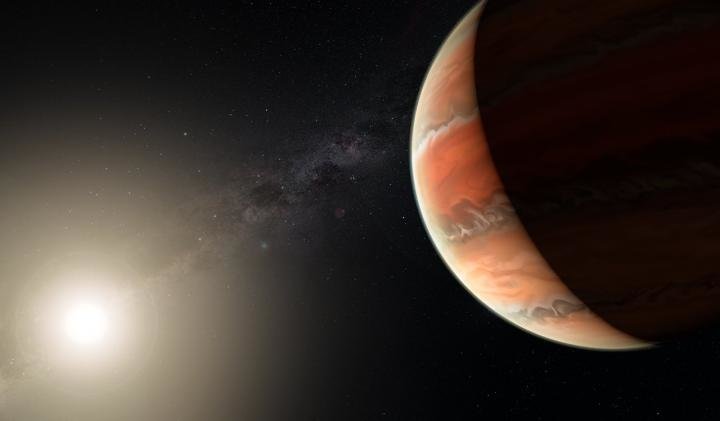The conditions on our home planet don’t always seem that favourable, but now astronomers have learned more about an inhabitable exoplanet that quite honestly would be better described as an “inferno world” than a planet.
Able to study exoplanets in greater detail than ever before, a team of scientists have discovered that ‘Exoplanet WASP-19b’ has a surface temperature of more than 2000 degrees Celcius and skies full of titanium.
Sounds like hell.

First discovered in 2009, exoplanet WASP-19b has a similar mass to that of Jupiter, but is fascinating to astronomers because it has one of the shortest orbital periods of any known planetary bodies.
In fact, it is so close to the parent star, it only takes19 hours to do a full orbit.
This proximity is also responsible for much of the inhospitable environment present on WASP-19b, with an atmosphere that contains titanium oxide, water, and traces of sodium, alongside a strongly scattering of global haze.
This presence of titanium oxide (which is rarely seen on Earth) on such a hot planet, acts as a heat absorber, stopping the heat molecules from escaping or entering the atmosphere.
University of Cambridge astronomer, Ryan MacDonald said: “The presence of titanium oxide in the atmosphere of WASP-19b can have substantial effects on the atmospheric temperature structure and circulation.”
Being so close to the parent star, it also means that every time WASP-19b passes in front of it, streams of starlight pass through the planet’s atmosphere (before eventually reaching Earth).
The astronomers have been collecting observations of WASP-19b over a period of more than one year.
By measuring variations in the planet’s radius at different wavelengths of light that passed through the exoplanet’s atmosphere and comparing the observations to atmospheric models, they could extrapolate different properties, such as the chemical content, of the exoplanet’s atmosphere.
Nikku Madhusudhan, who worked on the study at Cambridge University, said: “To be able to examine exoplanets at this level of detail is promising and very exciting.”
It isn’t the first study of a hell-like exoplanet as back in November 2016, NASA uncovered exoplanet HD 189733b, with a hazy cobalt atmosphere that would make getting caught out in the rain more than a little inconvenient – leaving you attacked by thousands of glass shards flying sideways through the air.
Studies of exoplanets are done to allow scientists to create better models of the exoplanets and then work out where there are habitable conditions.
